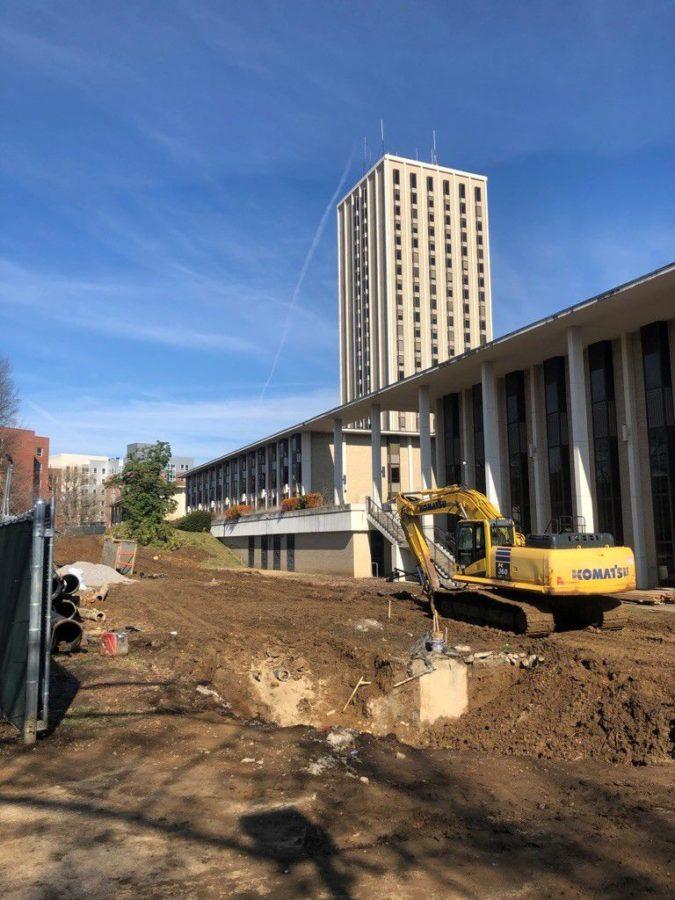Columnist: Kirwan-Blanding trees removed despite intent to ‘preserve’
February 19, 2020
When I heard that the Kirwin-Blanding complex was going to be removed, I was very pleased to hear that plans for replacement dorm included adjacent greenspace. It seems that places for students to relax outdoors have become harder and harder to find as the university continues to grow.
As the plans for the “UK Green” began to develop, I was excited that Eric Monday, UK’s Executive Vice President for Finance and Administration, stated that the trees that dot the area would be preserved. When I hear that trees will be “preserved,” I would hope to be able to take that at face value — that protected trees would not be damaged in any way, or even be at risk of potential harm.
Imagine my surprise at finding a heap of fresh wood chips and large logs in the middle of the Kirwin-Blanding complex, and dozens of trees missing early Wednesday morning. The shady canopy of stately white oaks, peacefully swaying pines, and elegantly flowered magnolias has been razed into a wasteland of bulldozer tracks. How are we making a greenspace by removing the green?
Many of the trees had diameters of over 20 inches, and some over 30 inches. These are large trees that provide many benefits, including shade, carbon sequestration, and stormwater management. The 30-inch wide white oak that was removed from the lawn facing Complex Drive helped to mitigate 5,128 gallons of stormwater a year and annually absorbed over 200 pounds of atmospheric CO2, the greenhouse gas driving climate change.
When you start to consider that this is only one tree, and more than 240 trees have been or will be removed, it is clear that we are throwing away a huge number of ecosystem benefits that save us money.
The massive sewer projects occurring on campus are directly tied to an inability to manage stormwater, yet we are cutting down some of our best resources to fix the problem. Having trees around is not only a financial benefit, but helps to improve mental health, something the university has struggled to address.
These benefits won’t come back for a long time. The large trees that were cut down had been alive for decades, and it will take that long for whatever new trees are planted in their place to begin to equate. We don’t have that long. I wouldn’t be surprised if the new dorm being built in that space has a lifespan of less than twenty years before the building and its surrounding trees are torn down again.
I understand that UK is growing and must meet the needs of its students, but I believe we can do a better job of protecting our natural resources while fulfilling our duties. We must have a long-term view in place when taking on large projects like this.
We need designs that will integrate with the existing trees, not destroy them, and we need buildings that will last so we can allow large trees to have the time to grow. We have great minds at UK, and I know that we can rise to the challenge and create a future for our campus that respects the value of the landscape and can work to enhance it, not destroy it.
The only way we can bring about these changes is by being vocal. Students hold power and we must be aware of that and know that we can use it to hold the university responsible. Whether you care about the environment, mental health, or aesthetics, this kind of project is an attack on all of these.
This kind of thing will happen again and it is fair for us to be angry, but we must channel our anger into building the campus in which we want to learn and live.
































































































































































